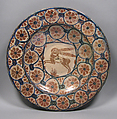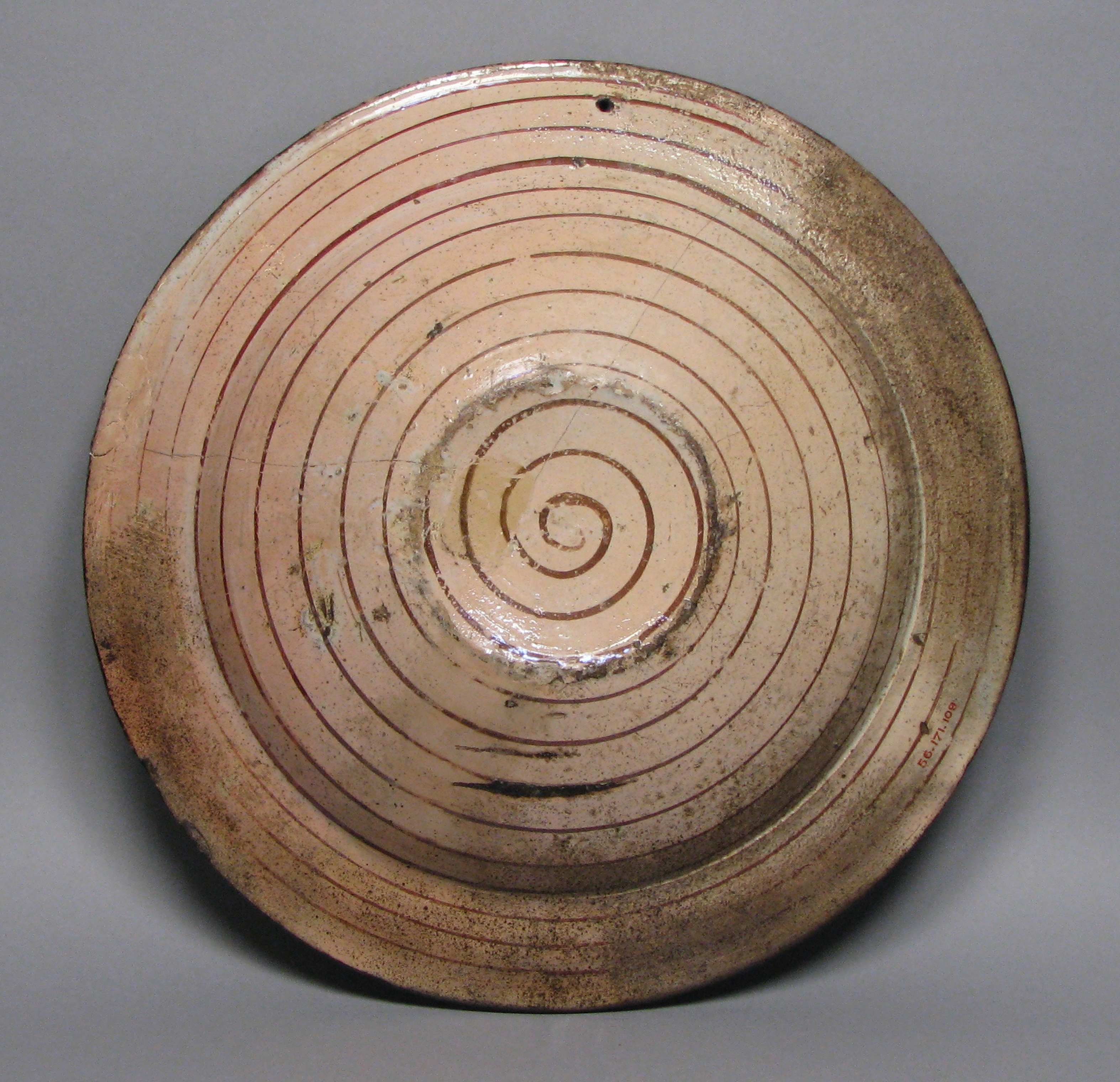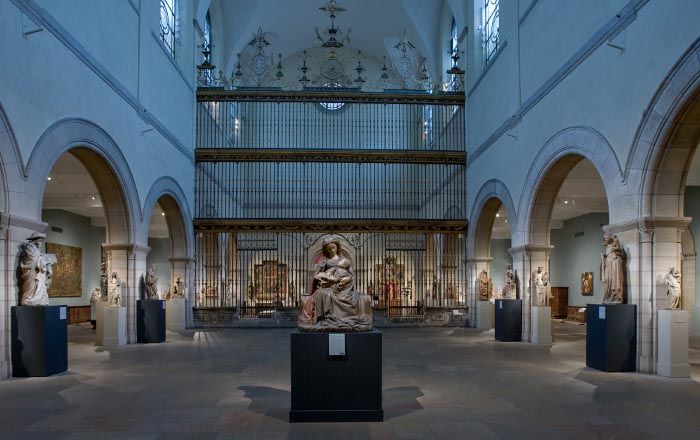Dish
Lusterware is the term used to describe a glazed earthenware ceramic decorated with an iridescent finish. The technique for creating this finish was developed in the ninth century under the rule of the Abbasid Caliphate in present-day Iraq. The medium involves a technique that is difficult to master, but if completed successfully, the surfaces of the ceramic objects display an iridescent sheen which is achieved through multiple firings and the application of a metal-based pigment (including silver, copper, tin, or a combination of these). Lusterware manufacture is still difficult to understand from a technical perspective because for generations, production was kept secret to protect workshop practices from being replicated by competitors. Therefore, pigment formulas and trade techniques were passed down from master to pupil and rarely recorded.
Knowledge of the technique for creating lusterware made its way to the Iberian Peninsula by the twelfth century, when most of the region was still under Islamic rule. By the 1400s, the Iberian center of lusterware production was in Manises, near the city of Valencia. Previously a Muslim taifa, or principality, the Kingdom of Valencia was conquered in the thirteenth century by James I for the Crown of Aragon, and it was here that Christians and Muslim potters worked, sometimes together, for a diverse clientele with a voracious appetite for high quality lustered wares.
The delicately painted, yet animated hare at the center of this dish echoes very similar leaping hares depicted on earlier lusterware bowls from Fatimid Egypt (see, for example, 64.261). The blue and orange concentric motif framing the jumping hare is referred to as a marguerite, or daisy (and resembles an orange slice). It is possible that the painted representation of sliced fruit also alludes to what should be served in this dish. If the pattern may be interpreted as a series of flowers, the hare may be understood in a paradisiacal context, alluding to the pleasures of earthly and divine realms. The elements from the natural world, including a rich bounty of fruits or flowers and an active hare, all point to a general message of abundance and fecundity.
This image cannot be enlarged, viewed at full screen, or downloaded.
This artwork is meant to be viewed from right to left. Scroll left to view more.



